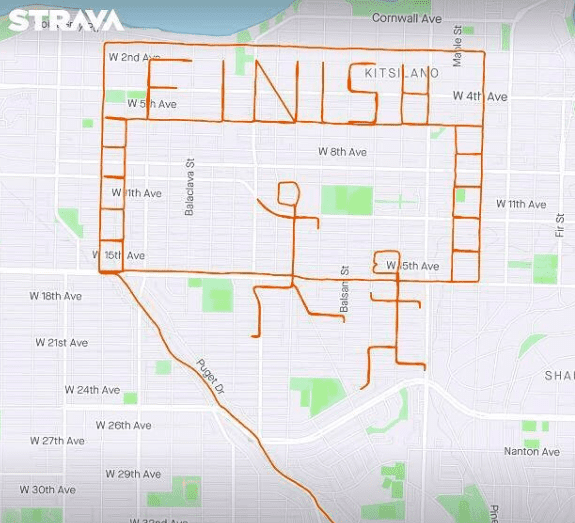How to make ridiculously impressive Strava art
Tony Tomsich, Mile2Marathon coach, explains the secret to killer Strava art

Tony Tomsich is a Vancouver-based marathoner and running coach who’s making some of the best Strava art we’ve ever seen. The runner last competed at the 2020 U.S. Olympic Marathon Trials, where he finished in the top 100. He says that race fulfilled “a lifelong goal.”
After the trials, he planned to take some time off from competitive running, but he didn’t anticipate the break that everyone would be forced to take. For a few weeks, Tomsich has been taking to Strava on Sundays to make really remarkable map art on long runs. This is his new favourite hobby, and it’s what keeps him excited about heading out the door.
https://www.instagram.com/p/B_dFRnEHGrc/
RELATED: How to run a 5K world record (or make Strava think you did)
Tomsich said he’s been playing around with Strava for years.
“As a running coach I spend a ton of time on Strava and Training Peaks, looking at other people’s runs, routes and data. From that I can start to see interesting roads and trails, and that’s where the ideas start to generate. It’s not taking a specific image and putting it on the map, it’s taking the map and pulling out what’s already there.” The runner says he is going to continue to run these routes every Sunday for the foreseeable future.
https://www.instagram.com/p/B-49YsJnLF5/
“Right now it’s keeping me motivated and engaged. But I think there’s another lesson in this pandemic, which is: we can use this time when there aren’t races to identify our core running values. For me, I love maps and navigation, so this has been fun. It’s a good reminder that there are other ways to enjoy the sport–even when we’re not chasing times or conventional finish lines.”
https://www.instagram.com/p/BtwkiR8BJ0t/
How to create Strava art (a three step process):
Step One: use the roads as your starting point for inspiration. Look at how they curve, and decide on your end goal from there.
Step Two: use the route builder function to fiddle around with your map and making your design identifiable.
Step Three: execute. This can be done in one of two ways: you can either bring the map with you, or do as Tomsich does and memorize the route before heading out the door (he brings a piece of paper with a few cues on it). Tomsich feels this is the more engaging and fun way of doing things.
“On Sunday mornings I get jitters, kind of like pre-race, because I know I’m going to try and do something today, and see if it pans out,” he says. “As always, the concern is that if your GPS doesn’t track, it’s all for naught, but that rarely happens.”
For his more complex or long routes, his wife will bike next to him with water, gels and a backup map, just in case his piece of paper isn’t doing the trick. Those long runs are documented via Instagram stories.
RELATED: Can you get ticketed based on your Strava activity?


